Product-Led Growth (PLG) has been a hot topic for the last few years in the world of product. But what exactly is it, and why should you care as a Product Manager or Product Leader? In this essay, we’ll dig in on everything you need to know…
What is Product-Led Growth (PLG)?
According to Blake Bartlett from OpenView, Product-Led Growth is a go-to-market strategy that relies on using your product as the main vehicle to acquire, activate, and retain customers. In other words, it’s about letting your product do the talking (and the selling).
Imagine this: Instead of relying on an army of sales reps to cold call potential customers, your product becomes your best salesperson. Users can try it out, fall in love with it, and decide to pay for it – all without ever talking to a human. That’s the essence of PLG.
In today’s software landscape, PLG is critical to at least understand, if not use as a primary go-to-market strategy. We’re no longer in the era where IT departments dictate what tools employees use. We’re in what Bartlett calls the “End User Era.”
In this new landscape, individual users discover, try, and champion software within their organizations. Think about how Slack or Zoom spread through your company. Chances are, it wasn’t through a top-down mandate but through individual teams adopting it and spreading the word.
PLG is really a response to this fundamental shift in how software is adopted and purchased. Companies that have embraced PLG, like Atlassian, Dropbox, and Zoom, have seen incredible growth and success. In fact, OpenView – a company Product Collective that has collaborated with quite a bit in the past- has done research that shows that PLG companies perform better post-IPO than their non-PLG peers.
If you’re a Product Manager or Product Leader, this essay is meant to be a guide to understanding and implementing PLG for your own products. Whether at a startup looking to scale rapidly or at an established company trying to stay competitive, PLG principles can help you build products that users love and sell themselves.
We’ll cover everything from PLG’s core principles to practical strategies for building and distributing PLG products. We’ll also explore the challenges of transitioning to a PLG model and what the future might hold.
Let’s dig in…
The Evolution of Software and Go-to-Market Strategies
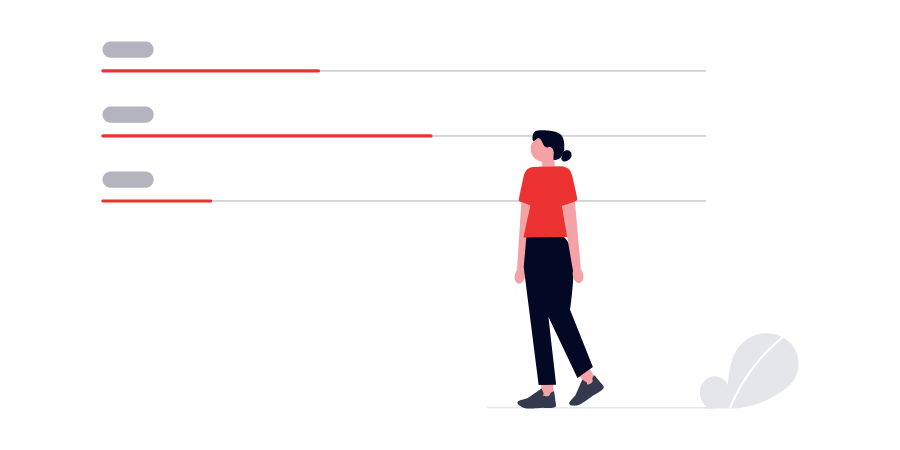
To understand why Product-Led Growth (PLG) is so important today, we should look at the past and explore how the software landscape has evolved over the past few decades.
The CIO Era: Sales-Led Growth
Cast your mind back to the ’90s. Britney Spears was topping the charts, and software was living in physical data centers. This was the CIO Era, where software purchases were big, expensive decisions made at the highest levels of an organization.
In this era, the name of the game was Sales-Led Growth. Picture suits, golf courses, and lengthy RFP processes. Software companies relied on field sales reps to wine and dine CIOs, convincing them to make million-dollar purchases. The product itself? It was often an afterthought compared to IT compatibility and enterprise-wide implementations.
The Executive Era: Marketing-Led Growth
As we entered the 2000s, things started to shift. The rise of cloud computing changed the game. Suddenly, software wasn’t a massive upfront investment but a more affordable subscription model. Welcome to the Executive Era.
In this new world, department heads and executives became the primary decision-makers for software purchases. The focus shifted from IT compatibility to ROI and KPIs. This gave birth to what we now know as Marketing-Led Growth.
You’re familiar with this era if you’ve ever heard terms like MQLs, SDRs, or inside sales. Companies invested heavily in inbound marketing and inside sales teams to generate and convert leads. The product still wasn’t the star of the show, but at least it was getting more attention.
The End User Era: Product-Led Growth
And now, here we are in the 2020s. Welcome to the End User Era, where individuals within organizations are increasingly calling the shots on software adoption. This is where Product-Led Growth comes into its own.
In this era, users expect to try before they buy. They want software that solves their immediate problems without going through procurement or IT. Think about those tools we mentioned before – Atlassian, Slack, Zoom, etc. As Blake Bartlett from OpenView puts it, end users find these products and tell their boss which ones to buy. This fundamental shift in buying behavior is why PLG has become so crucial.
So, why is PLG so effective in today’s landscape? A few key reasons:
- Lower friction: Users can try the product immediately without going through a sales process.
- Faster time-to-value: PLG products are designed to deliver value quickly, often within minutes of signing up.
- Natural expansion: As users see value, they organically spread the product within their organization.
- Lower customer acquisition costs: The product itself does much of the “selling,” reducing the need for expensive sales and marketing efforts.
In the next section, we’ll explore the core principles that make PLG work…
The Essential Components of a Product-Led Growth Strategy
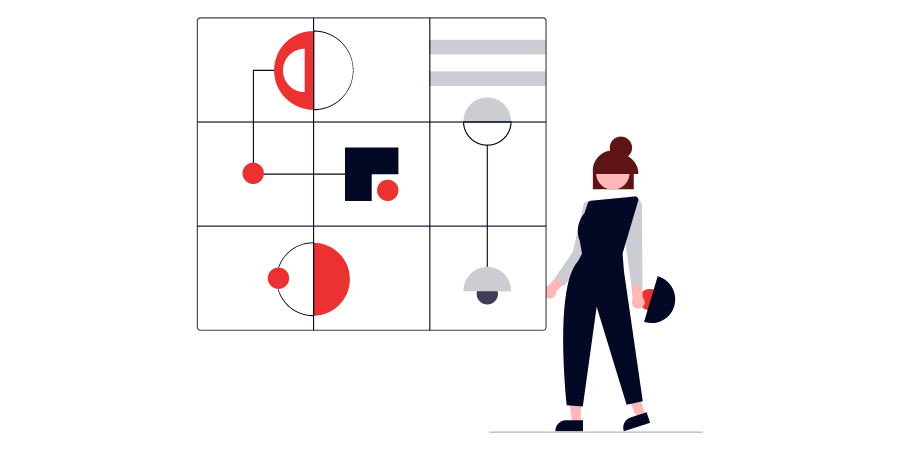
Now that we understand why Product-Led Growth (PLG) is crucial in today’s software landscape let’s dive into the core principles that make it work. Several things make up the core of a PLG strategy.
- Appeal to End Users
In the PLG world, your primary focus shifts from executives and decision-makers to the end users. These people will use your product day in and day out. They’re the ones who experience the pain points your product aims to solve, and they’re the ones who can become your most powerful advocates within their organizations.
But here’s the catch: end users care about different things than executives do. While ROI calculations and feature lists might sway an executive, end users are motivated by solving their immediate, often mundane, problems.
End users consider their pain an annoyance. They’re not looking for a solution to improve KPIs; they’re looking for a way to make their daily work life less frustrating.
Take Slack, for instance. Their core value proposition isn’t about improving communication efficiency (though that’s a byproduct). It’s about eliminating the annoyance of internal emails. They appeal directly to the end user’s pain point: “I hate internal emails.” I know that appeal led me to push my organization to try Slack out a decade ago when I first learned of the platform.
To appeal to end users:
- Identify the specific pain points or “annoyances” your target users face.
- Frame your product’s value proposition in terms of solving these specific pains.
- Speak the language of your users, not the language of the C-suite.
In Blake Bartlett’s words, “Annoyance is opportunity.” By focusing on these seemingly small pain points, you can create products that users love and champion within their organizations.
- Deliver Value Before Paywall
In the traditional software sales model, customers pay upfront and then hope the product delivers value. PLG flips this on its head: users experience value first, then pay.
This principle is about building trust and demonstrating your product’s worth before asking for any commitment. It’s the software equivalent of “try before you buy,” and it’s a powerful way to reduce friction in the adoption process.
To implement this principle:
- Identify your product’s “aha moment” where users first experience real value.
- Design your user journey to reach this moment as quickly as possible.
- Place your paywall after this moment, not before.
Zoom is a great example of this principle in action. Users can join or even host free meetings, immediately experiencing the product’s core value. The paywall appears only when they need advanced features or longer meeting times.
- Make It Easy to Get Started
In the PLG model, every bit of friction in the onboarding process is a potential lost customer. Your goal should be to make it as easy as possible for new users to sign up and start using your product.
This means eliminating traditional enterprise software hurdles like lengthy sign-up forms, credit card requirements, sales calls, and complex onboarding processes. Instead, focus on creating a self-serve experience that gets users to value quickly.
Key strategies here include:
- Simplify your sign-up process. Use single sign-on options where possible.
- Offer a generous free tier or trial that doesn’t require a credit card.
- Create intuitive, self-serve onboarding experiences.
- Provide easily accessible documentation and support resources.
Calendly exemplifies this principle well. Users can sign up with a single click using their Google account and create their first scheduling link within minutes without ever interacting with a salesperson.
- Prioritize Customer Success Before Sales
In the PLG model, the traditional funnel gets turned on its head. Instead of leading with sales and hoping for customer success, you lead with customer success and bring in sales later.
This doesn’t mean sales aren’t important—they are. However, in a PLG model, sales come into play once users are already experiencing value and looking to expand their usage.
Here’s how this typically plays out:
- Users sign up and start using the product for free or on a limited plan.
- The product team focuses on driving activation and engagement, helping users realize value.
- Customer success teams proactively reach out to help users get more value from the product.
- Sales get involved only when usage reaches a certain threshold or users express interest in expanding.
This approach ensures that the user is already sold on the product’s value when a salesperson enters the picture. The conversation then becomes about how to expand usage, not whether to adopt the product at all.
Twilio’s S-1 filing describes this approach well: “We put a commercial transaction after the customer is experiencing success with our products. We call this ‘inverting the traditional enterprise sales model.'”
Putting these components into action
These PLG components are interconnected and mutually reinforcing. By appealing to end users, you make it easier to deliver value quickly. Delivering value before the paywall increases the chances of users getting started easily. And by prioritizing customer success, you create a positive feedback loop that drives organic growth.
Implementing these principles often requires a shift in mindset, especially for companies used to traditional enterprise sales models. It may mean rethinking your product design, go-to-market strategy, and organizational structure.
But the potential rewards are significant. Companies that successfully implement these PLG principles often see faster growth, lower customer acquisition costs, and higher customer lifetime value.
The next section will explore specific strategies and tactics for building a product that embodies these PLG principles and creates a truly product-led user experience.
Building a Product for PLG
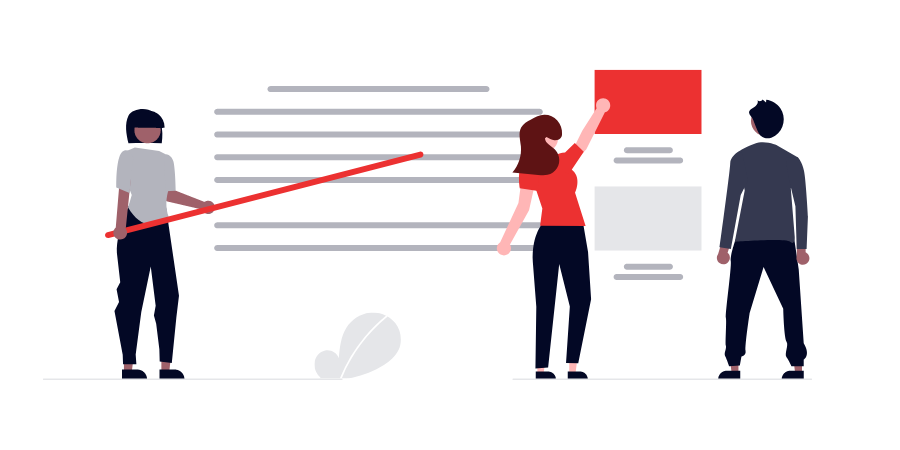
The foundation of any successful PLG product is its ability to solve real problems for end users. As discussed earlier, these problems often manifest as “annoyances” rather than high-level business challenges. Your job is to identify these pain points and address them head-on.
- Functional Outcome: The core tasks users want to accomplish.
- Emotional Outcome: How users want to feel (or avoid feeling) as a result of using the product.
- Social Outcome: How users want to be perceived by others when using the product.
Your product must deliver on all three outcomes to solve end-user pain points. For example, a project management tool’s functional outcome might be helping users organize tasks. Still, the emotional outcome could reduce stress, and the social outcome could be the appearance of more organization and competence among colleagues.
To uncover these pain points:
- Conduct user interviews focused on day-to-day frustrations.
- Analyze support tickets and feature requests for common themes.
- Use analytics to identify where users struggle or drop off in your product.
Remember, the goal is to simplify your users’ lives, not just add features.
Designing for simplicity and adoption
In the PLG world, complexity is the enemy. Your product must be intuitive enough that users can derive value without extensive training or hand-holding. If you have a simple consumer application, you might be able to get away without using a product tour. Then again, if the product tour is simple and intuitive, it could help reinforce your PLG strategy. Regardless, keeping things simple is best.
Some key principles for designing a PLG-friendly product:
- Focus on core functionality: Identify the key actions that deliver value and make them front and center.
- Progressive disclosure: Introduce advanced features gradually as users become more proficient.
- Consistent UI patterns: Use familiar design patterns to reduce the learning curve.
- Clear microcopy: Use concise language throughout the product to guide users.
Remember, every extra click or confusing interaction allows users to give up and look elsewhere.
Creating “aha!” moments
The “aha!” moment is when a user first experiences the core value of your product. It’s a critical milestone in the user journey, often determining whether a user will stick around or churn.
To create powerful “aha!” moments:
- Identify your product’s core value proposition.
- Design the quickest path for users to experience this value.
- Remove any unnecessary steps or friction between sign-up and this moment.
For instance, Slack’s “aha!” moment might be when a user receives a quick response from a colleague, experiencing the power of real-time communication. The quicker you can get users to this moment, the better.
Implementing effective onboarding
Onboarding is where many PLG products live or die. A great onboarding experience makes users value the product quickly and prepares them for long-term success.
Wes Bush introduces the “Bowling Alley Framework” for effective onboarding:
- Develop a straight line: Identify the quickest path to value and remove unnecessary steps.
- Create product bumpers: Use in-app guidance, tooltips, and progressive disclosure to keep users on track.
- Build conversational bumpers: Use email, push notifications, and other channels to re-engage users and guide them to the product.
Some key strategies for effective PLG onboarding:
- Personalize the experience based on user roles or goals.
- Use interactive tutorials or guided tours for complex features.
- Celebrate small wins to keep users motivated.
- Provide contextual help and resources throughout the product.
Remember, onboarding isn’t just about the first session—it’s an ongoing process of helping users discover the value of your product.
Distributing a PLG Product
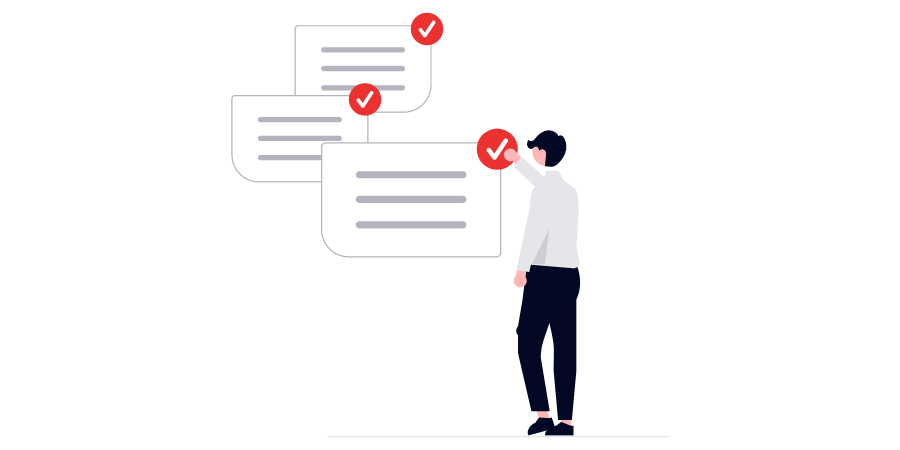
With a well-designed product, the next challenge is getting it into users’ hands. In the PLG model, distribution looks quite different from traditional sales-led approaches. In PLG, your existing users become your most powerful distribution channel. The goal is to create a compelling product experience that users naturally want to share with others.
Blake Bartlett from OpenView emphasizes that virality and word of mouth are great places to start because they offer free growth. He cites Calendly as a prime example, where sending a scheduling link to someone else is a natural vector for product adoption.
To foster virality and word-of-mouth:
- Build sharing functionality directly into your product’s core workflows.
- Create incentives for users to invite others (e.g., additional features or storage).
- Design for network effects, where the product becomes more valuable as more people use it.
- Make it easy for satisfied users to recommend your product (e.g., through in-app referral programs).
Remember, the key is to make sharing a natural part of using the product, not an afterthought.
In the PLG model, the best leads are often those already using and finding value in your product. These are your product-qualified leads (PQLs). To optimize for PQLs:
- Define clear criteria for what constitutes a PQL based on product usage patterns.
- Use product analytics to track user behavior and identify PQLs automatically.
- Create triggers for sales or customer success teams to engage with PQLs immediately.
- Develop tailored messaging and offers for different types of PQLs.
Focusing on PQLs ensures that your sales efforts are directed at users who already understand and value your product.
Freemium and free trial models are cornerstones of PLG distribution, allowing users to experience value before committing to a purchase. However, implementing these models effectively requires careful consideration.
Wes Bush often advocates for freemium over time-limited trials, arguing that freemium leads to more sign-ups and allows for a longer conversion tail. However, the right approach depends on your specific product and market.
Key considerations for freemium and free trial models:
- Determine the right balance of features to offer in the free version.
- Set clear upgrade triggers that align with users experiencing increased value.
- Use in-product messaging to guide users towards paid features when appropriate.
- Continuously analyze and optimize your conversion funnel from free to paid.
Remember, acquiring and converting users to paying customers over time is the goal.
In today’s interconnected software ecosystem, being in the right marketplaces and offering key integrations can significantly boost your distribution. Blake Bartlett advises distributing your product where your users live. This might mean being present in app stores, browser extension marketplaces, or platforms specific to your industry.
Strategies for scaling through marketplaces and integrations:
- Identify the primary platforms and tools your target users are already using.
- Develop integrations that create seamless workflows between your product and these platforms.
- List your product in relevant app marketplaces and optimize your listings for discovery.
- Create co-marketing opportunities with integration partners to reach new audiences.
Zapier serves as an excellent example here. They’ve become a go-to solution for users looking to connect different tools by focusing on app-to-app integrations and optimizing for specific use cases.
Implementing these distribution strategies effectively requires a deep understanding of your users and how they interact with your product. It’s not just about reaching more people but about reaching the right people in the right way at the right time.
As you develop your distribution strategy, keep in mind that in PLG, the lines between product, marketing, and sales often blur. Your product itself becomes a key part of your marketing and sales funnel. This integrated approach allows PLG companies to achieve the rapid, efficient growth that’s made them so successful in recent years.
Measuring PLG Success
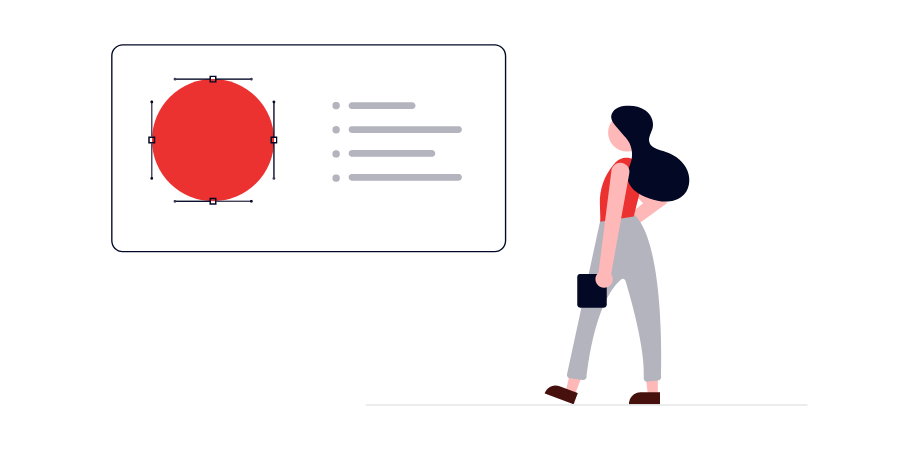
Successful PLG companies are set apart by their ability to measure, analyze, and act on product usage data. Understanding key metrics that companies use to measure their PLG success is important.
Traditional SaaS metrics like Monthly Recurring Revenue (MRR) and Customer Acquisition Cost (CAC) are still important in a PLG model but don’t tell the whole story. PLG introduces a new set of metrics focusing on product adoption and usage.
According to the 2022 Product Benchmarks report that we at Product Collective collaborated on with OpenView, some of the most crucial PLG metrics include:
- Time to Value (TTV): How quickly users reach their first “aha!” moment.
- Product-Qualified Lead (PQL) conversion rate: The percentage of PQLs that convert to paying customers.
- Expansion revenue: Revenue generated from existing customers upgrading or increasing usage.
- Net Dollar Retention (NDR): Revenue retained from existing customers, including expansions and contractions.
- Virality coefficient: The number of new users an existing user generates.
Product and Growth Leader and Advisor, Elena Verna emphasizes the importance of activation and engagement as key indicators of PLG success in a fireside chat conducted by Lenny Rachtisky. She suggests tracking these metrics at user and account levels to comprehensively view product adoption.
When setting up your metrics, it is crucial to align them with your specific product and business model. For instance, a collaboration tool like Slack might prioritize team invitation rates, while a design tool like Figma might focus on the number of designs created.
You need the right tools to measure and act on these metrics effectively. The PLG tech stack looks quite different from a traditional sales-led stack. Blake Bartlett outlines the shift in key tools for PLG:
- Product analytics (e.g., Amplitude, Mixpanel) replace CRM as the system of record.
- Session recording tools (e.g., FullStory, Hotjar) replace sales call recordings.
- In-app messaging and guides (e.g., Intercom, Pendo) substitute traditional sales dialers.
- Self-serve payment tools (e.g., Stripe, Chargebee) replace manual contract management.
When building your PLG tech stack, prioritize tools that:
- Provide deep insights into user behavior within your product.
- Allow for easy segmentation of users based on behavior and characteristics.
- Enable quick experimentation and iteration on the user experience.
- Facilitate seamless communication with users based on their actions and stage in the journey.
With the right metrics and tools, the next step is turning data into action. This is where the rubber meets the road in PLG. In his book, Product-Led Growth, Wes Bush introduces the concept of the “Triple A Sprint” for optimizing PLG:
- Analyze: Regularly review your key metrics to identify areas for improvement.
- Ask: Based on your analysis, form hypotheses about what changes could drive growth.
- Act: Implement changes and measure their impact.
This iterative process allows you to optimize your product experience and drive growth continuously. Some key ways to use product data:
- Personalization: Tailor the user experience based on behavior and preferences.
- Targeted messaging: Use in-app notifications and emails to guide users to value based on their journey.
- Feature prioritization: Focus development efforts on areas that drive the most value for users.
- Pricing optimization: Adjust pricing tiers based on usage patterns and willingness to pay.
It’s important to note that while data is crucial, it shouldn’t be the only driver of decision-making. Wes Bush cautions against over-relying on quantitative data, advocating for a balance with qualitative insights from user research and customer interviews – much like we’ve discussed in our previous essay on learning from customers.
Measuring PLG success is an ongoing process. As your product and user base evolve, so should your metrics and how you use them. The key is to stay curious, questioning how to serve your users better and drive growth through your product.
Transitioning to PLG: Challenges and Strategies
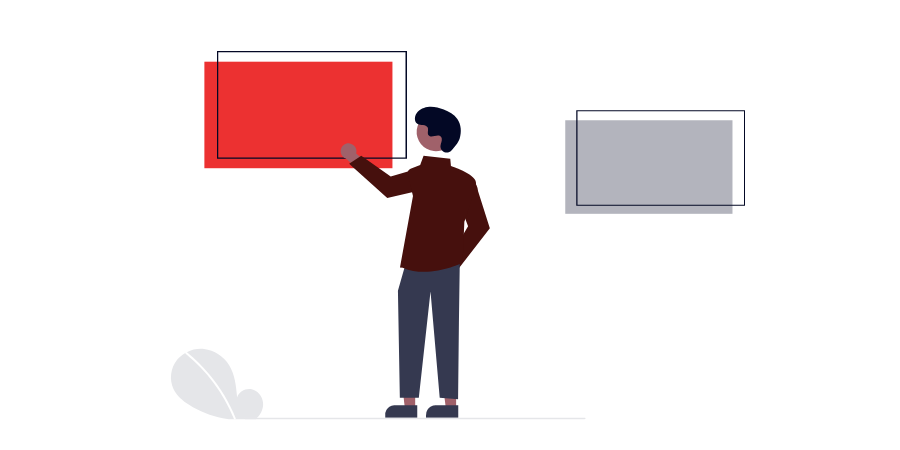
Transitioning to a Product-Led Growth model isn’t just about changing your product or pricing strategy—it’s a fundamental shift in your organization’s operations. This transition can be challenging, especially for companies with established sales-led or marketing-led models. Let’s explore some common challenges and strategies to overcome them.
One of the biggest hurdles in transitioning to PLG is internal resistance. As Elena Verna points out, growth models should be authentic and local to your product offering. This means that simply copying another company’s PLG playbook won’t work—you need to develop an approach that fits your specific product and market.
To overcome resistance:
- Educate your team on PLG principles and benefits. Share case studies and data showing the success of PLG companies in your industry.
- Start small with pilot programs or specific product features to demonstrate the potential of PLG.
- Involve key stakeholders from different departments in the PLG strategy development process.
- Address concerns proactively, especially from sales teams who might feel threatened by the shift.
Remember, PLG isn’t about eliminating sales or marketing—it’s about aligning these functions more closely with the product experience. In a PLG model, sales shifts from convincing prospects to buy to helping users get more value from a product they already use. This requires a different skill set and approach.
Blake Bartlett describes this new approach as “product-led sales,” sales teams use product usage data to identify expansion opportunities and guide users to higher-value use cases.
To adapt your sales motion:
- Train your sales team on the product and how to use product usage data effectively.
- Implement a lead scoring system based on product usage (PQLs) rather than traditional MQLs.
- Shift compensation models to incentivize expansion and customer success, not just new logo acquisition.
- Develop sales playbooks that focus on demonstrating additional value rather than features and benefits.
While PLG can be highly effective, it’s not always sufficient for large enterprise deals. Finding the right balance between self-serve PLG motions and high-touch enterprise sales is the challenge. Wes Bush advocates for a hybrid approach, where PLG is the primary growth engine but supplemented by sales efforts for larger accounts or more complex use cases.
Strategies for balancing PLG and enterprise sales:
- Use PLG as a “land and expand” strategy, allowing users to adopt the product organically before engaging sales for larger deployments.
- Develop clear criteria for when to transition accounts from self-serve to sales-assisted.
- Create a seamless handoff process between the product experience and sales team.
- Maintain a consistent user experience across self-serve and sales-assisted channels.
Let’s look at a couple of companies that have successfully transitioned to PLG:
Atlassian: Originally a traditional enterprise software company, Atlassian boldly moved to PLG in the mid-2000s. They eliminated their sales team entirely and focused on creating products that users could discover, try, and buy without human interaction. This move led to explosive growth, with revenue increasing from $45 million in 2010 to over $2 billion in 2021.
Key takeaway: Atlassian’s success can be partially attributed to fully committing to the PLG model and optimizing its entire business around it.
HubSpot: Known for pioneering inbound marketing, HubSpot recognized the shift towards PLG and began transitioning its business model in the mid-2010s. It introduced freemium versions of its products and focused on creating a seamless upgrade path for users.
Kieran Flanagan, VP of Marketing at HubSpot, describes their approach in this post from Reforge: “We set our sights on providing companies from big to small with the right tools to grow. We wanted customers to be able to get started with our marketing, sales, and customer success products for free and upgrade to different packages as their needs grew.”
Key takeaway: HubSpot’s gradual transition allowed them to maintain their existing business while building a strong PLG motion.
These case studies highlight that there is no one-size-fits-all approach to transitioning to PLG. The key is to find an approach that aligns with your product, market, and organizational culture.
The Future of PLG

As we look ahead, it’s clear that Product-Led Growth isn’t just a passing trend—it’s becoming the dominant go-to-market strategy for software companies. Let’s explore some emerging trends, how PLG is expanding into different market segments, and make predictions about its evolution.
- AI-powered personalization: As artificial intelligence and machine learning technologies advance, these tools are increasingly used to create hyper-personalized product experiences. This allows for more nuanced and effective onboarding, feature recommendations, and upgrade prompts.
- Product-led sales: Blake Bartlett predicts that product-led sales are the future. This hybrid approach combines the efficiency of PLG with the high-touch approach of traditional sales, using product usage data to inform and guide sales interactions.
- Community-led growth: Companies increasingly recognize user communities’ power in driving adoption and retention. Expect to see more PLG strategies incorporating community building as a core component. You can certainly say that this has been Product Collective’s very own PLG strategy to date.
- Increased focus on user activation: As the PLG space becomes more competitive, companies are doubling down on optimizing the crucial first moments of the user experience. Expect to see more sophisticated activation strategies that get users to value faster than ever.
While PLG has its roots in B2B SaaS, we’re also seeing it expand into new areas:
- Enterprise software: Even traditionally, sales-led enterprise software companies are adopting PLG principles. They’re creating free tiers, focusing on user experience, and using product usage data to drive expansion.
- Hardware and IoT: Companies in these spaces use software layers and freemium models to create PLG-like experiences. For instance, Peloton uses its free app to drive hardware sales.
- B2B marketplaces: Platforms like Shopify and Udemy use PLG strategies to onboard both sides of their marketplaces, creating network effects that drive growth.
- Developer tools: This space has quickly adopted PLG, with companies like Twilio and Stripe leading the way. Expect to see even more sophisticated PLG strategies in this sector.
As Elena Verna notes, “Every industry and every sector is going through transformation at different velocities. So even if you don’t have that product-led sales or self-serve in your industry now, I guarantee you it will pop up in the next 10 years.”
The future of PLG is bright and evolving rapidly. As product leaders, staying ahead of these trends and continuously adapting our strategies will be crucial. The companies that can effectively harness the power of their product to drive growth will be the ones that thrive in this new era of software.
Remember, at its core, PLG is about creating value for users and making it as easy as possible for them to experience that value. If we keep that principle at the forefront, we’ll be well-positioned to succeed in the product-led future.
Summing it all up
As explored throughout this essay, Product-Led Growth isn’t just a trend—it’s a fundamental shift in how software companies acquire, retain, and grow their user base. From its roots in the evolving software landscape to its implementation across various product development and distribution aspects, PLG has proven to be a powerful strategy for companies of all sizes.
The core principles of PLG—appealing to end users, delivering value before the paywall, making it easy to get started, and prioritizing customer success—are reshaping how we think about product development and go-to-market strategies. As product leaders, we must adapt to this new paradigm.
But knowing about PLG isn’t enough. The real challenge—and opportunity—lies in implementation. So as we close, consider these potential next steps to take action…
- Audit your current product experience. How quickly can users reach their “aha!” moment? Are there unnecessary friction points in your onboarding process?
- Revisit your metrics. Are you tracking the right PLG metrics like Time to Value and Product-Qualified Leads?
- If you haven’t already, experiment with freemium or free trial models. Start small and iterate based on user feedback and data.
- Foster cross-functional collaboration. PLG requires alignment across product, marketing, sales, and customer success teams.
- Invest in your product analytics stack. The right tools can provide invaluable insights into user behavior and growth opportunities.
Remember, transitioning to PLG is a journey, not a destination. It requires ongoing experimentation, learning, and adaptation. But for those who successfully make the shift, the rewards can be tremendous: faster growth, lower acquisition costs, and, most importantly, happier users.
The product-led future is here. Are you ready to lead the way?


